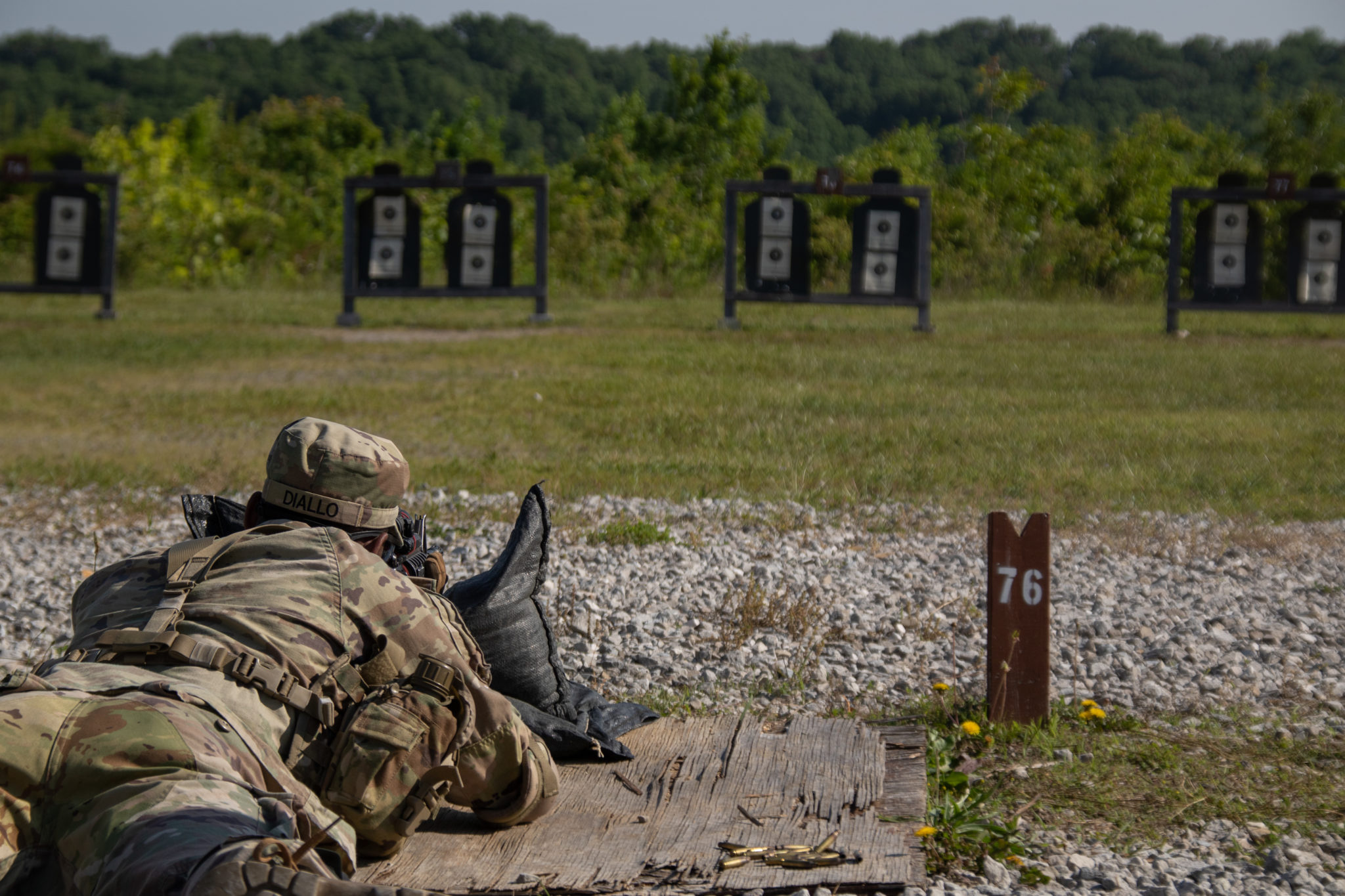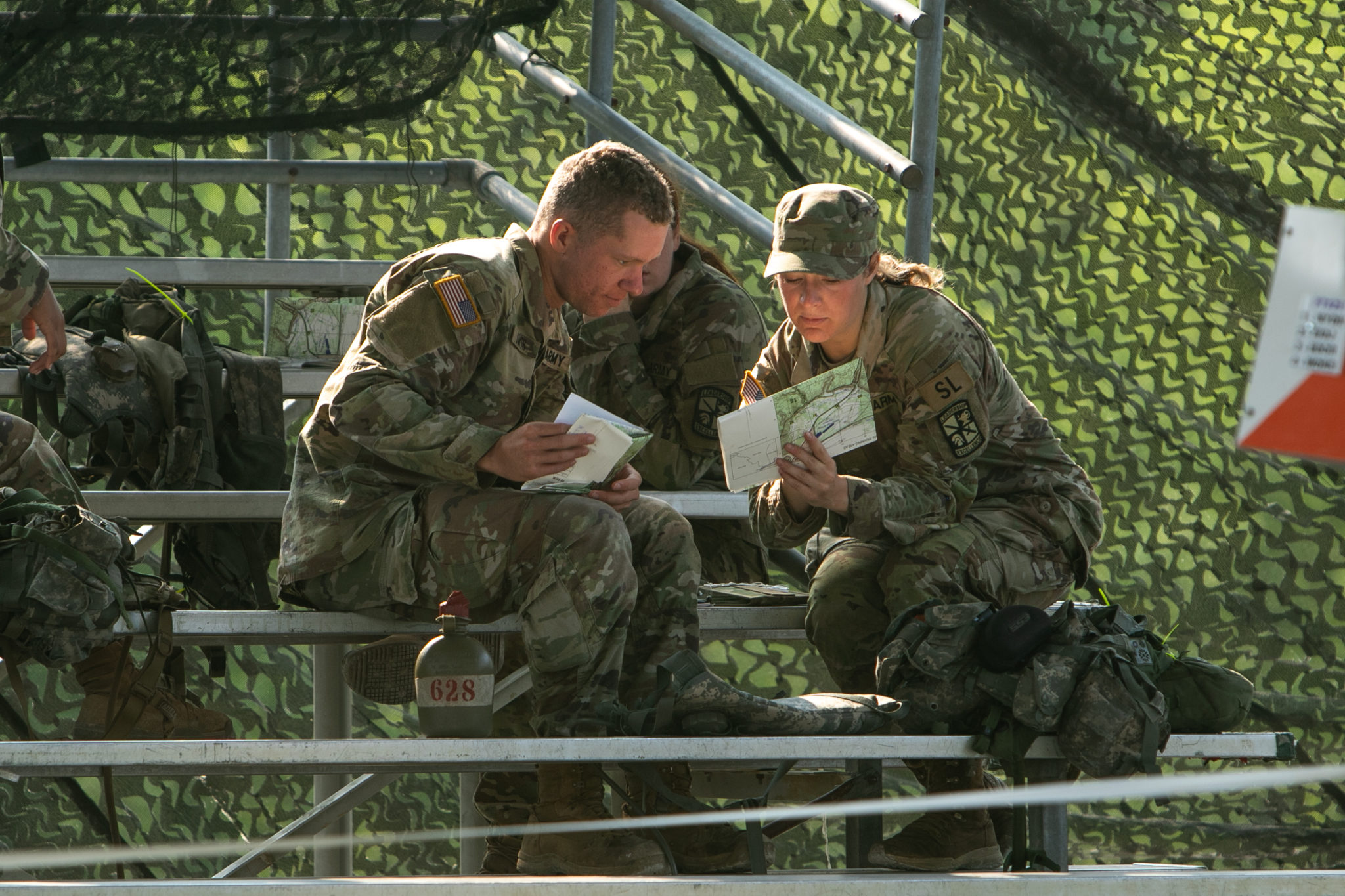FORT KNOX, Ky. – During today’s briefing of the Field Leader Reaction Course (FLRC), Lt. Col. Daniel Gregory asked Advanced Camp Cadets from Bravo Company, 2nd Regiment to raise their hands if they thought they would successfully complete all the obstacles their squad faced. Many of them confidently raised their hands, laughing with their squad members. Some of those Cadets would soon find out there is one obstacle that has yet to be beat – the Ho Chi Minh Trail.
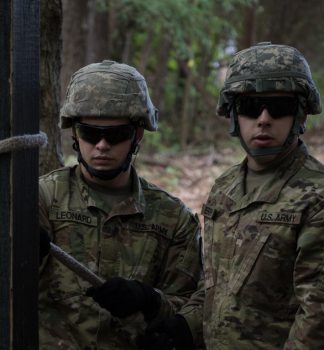
Univeristy of Maryland College Park student, Cadet Grant Leonard (left) and Cadet Andre Berry, a McDaniel College student, (right) from 2nd Regt., Bravo Co., try to create a rope swing to get across the Ho Chi Minh Trail obstacle on Friday, May 31, 2019, at Fort Knox, KY. Cadets visit the Field Leader Reaction Course to form a bond within their squad and to build leadership skills rather than to complete each obstacle. | Photo by Makayla Holder, CST Public Affairs Office
The FLRC is an event that happens within the first few days of Cadet Summer Training (CST). This course has multiple obstacles which require effective teamwork to successfully complete within 20 minutes. One of these obstacles, the Ho Chi Minh Trail, is especially difficult. It requires productive planning, physical strength and working high above the ground.
The obstacle might seem simple at first glance. There is an elevated, horizontal pole with a small vertical section in the middle. Most of the vertical pole is painted yellow, which means Cadets can not touch that part of the obstacle. If they do, a timed penalty is given or the Cadet must start over. The objective is to get all Soldiers and equipment from one side to the other without ever touching the ground.
There are several supplies that can be used during this obstacle. Cadets are given three different sized ropes, two milk crates and several small pieces of wood. The ropes can be used in any way, but the pieces of wood must be transported in the milk crates.
Staff Sgt. Richard Murphy, a facilitator for the Ho Chi Minh Trail, said he hasn’t seen anyone complete this obstacle, so he isn’t sure if there is one “correct” way to pass the course.
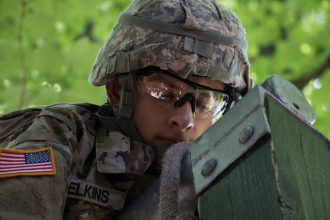
Ohio State University student, Cadet Robert Elkins from 2nd Regt., Bravo Co., works to position a rope on a pole on the Ho Chi Minh obstacle on Friday, May 31, 2019, at Fort Knox, KY. Cadets visit the Field Leader Reaction Course to form a bond within their squad and to build leadership skills rather than to complete each obstacle. | Photo by Makayla Holder, CST Public Affairs Office
“We have yet to see anybody successfully traverse this obstacle,” he said. “I have a few ideas of what I think could work, but I haven’t tried it yet so I can’t say for sure.”
The Advanced Camp Cadets tend to have creative approaches with this challenge. Christopher Richard, a University of Cincinnati student, was a member of the first squad to attempt the obstacle today.
Richard’s squad hoisted a few Cadets to the bar by using the longest rope. After only getting two Cadets to the other side, Richard talked about his experience at the obstacle.
“It took a lot of upper-body strength and a lot of muscles to get us up to the bar,” the Cadet from Cleveland, Ohio said. “We worked pretty good as a team once everyone settled down and started listening. At the beginning, a lot of people were trying to talk. If we had more time, I’m pretty sure we could’ve gotten everyone across.”
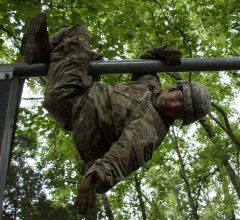
Austin Peay State University student, Cadet Juan Soto from 2nd Regt., Bravo Co., waits to take the rope from his teammates on Friday, May 31, 2019, at Fort Knox, KY. Cadets visit the Field Leader Reaction Course to form a bond within their squad and to build leadership skills rather than to complete each obstacle. | Photo by Makayla Holder, CST Public Affairs Office
Another strategy used today was to build a rope bridge. Rather than using the longest rope to climb to the top, some squads saved the rope for another purpose. The idea was to lift two Cadets to the bar and have each one tie the rope to either end of the obstacle. The rest of the Cadets would then try to walk or climb across the rope instead of using the bar.
Nicholas Pitre, a Calvin University student, was part of a squad who attempted this strategy.
“I think the rope bridge idea really worked,” the Cadet from Jacksonville, Florida said. “We should have thought about what to do with the tools a little sooner. But if we had a little more time and jumped on it a little sooner, I think it would’ve worked.”
One squad had an entirely different strategy. Their idea was to tie the rope to the elevated bar and swing across to the other side. Juan Soto, an Austin Peay State University student, was actually sitting on the bar as his squad members tried to swing across.
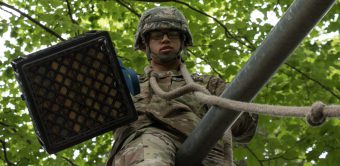
Washington State University student, Cadet Phillip Bowman from 2nd Regt., Bravo Co., moves the supplies across the Ho Chi Minh Trail obstacle on Friday, May 31, 2019, at Fort Knox, KY. Cadets visit the Field Leader Reaction Course to form a bond within their squad and to build leadership skills rather than to complete each obstacle. | Photo by Makayla Holder, CST Public Affairs Office
“I wasn’t too nervous because I kind of like heights,” the Cadet from Springfield, Tennessee said. “It was exciting to be up there and be part of the mission.”
Although no squads successfully completed this obstacle, the FLRC focuses on more than whether or not the Cadets are triumphant. The main goals of the course are for Cadets to build a relationship with their squad members while enhancing leadership skills.

